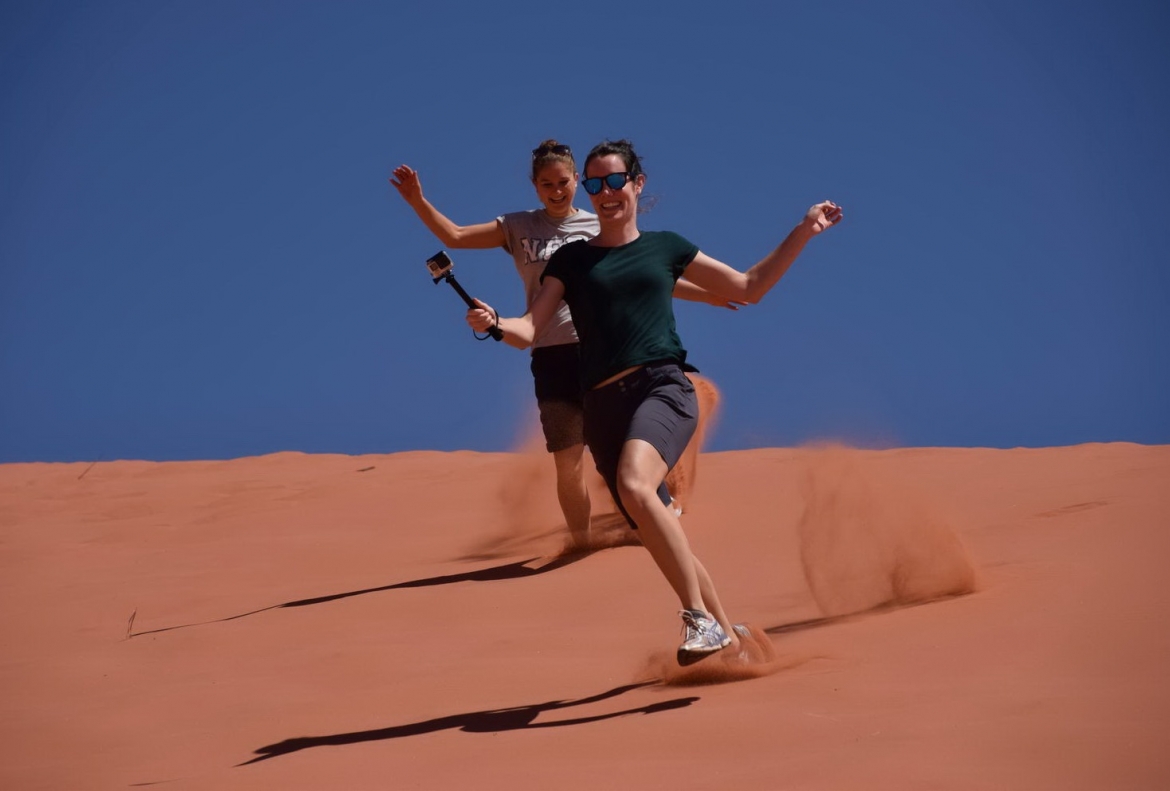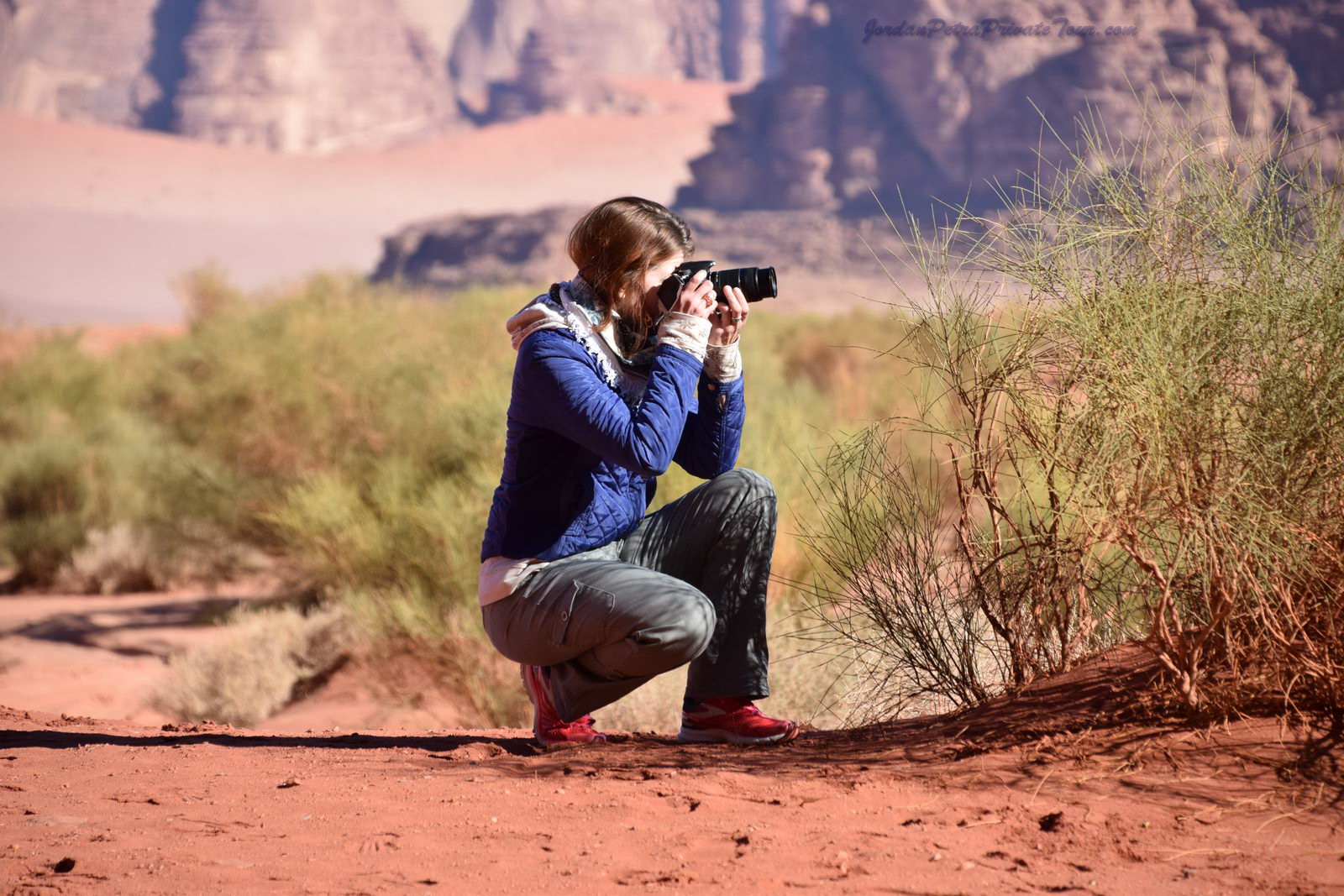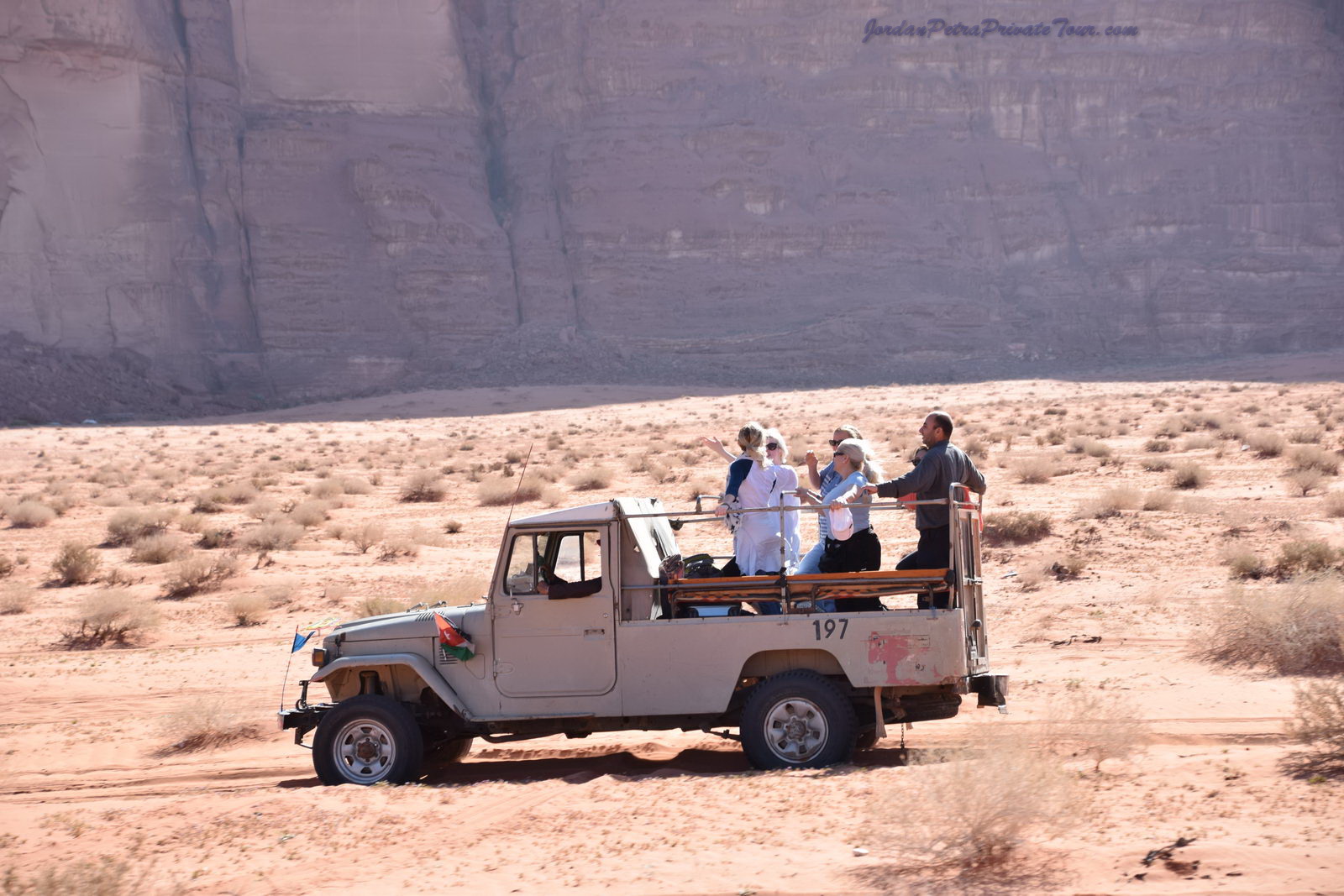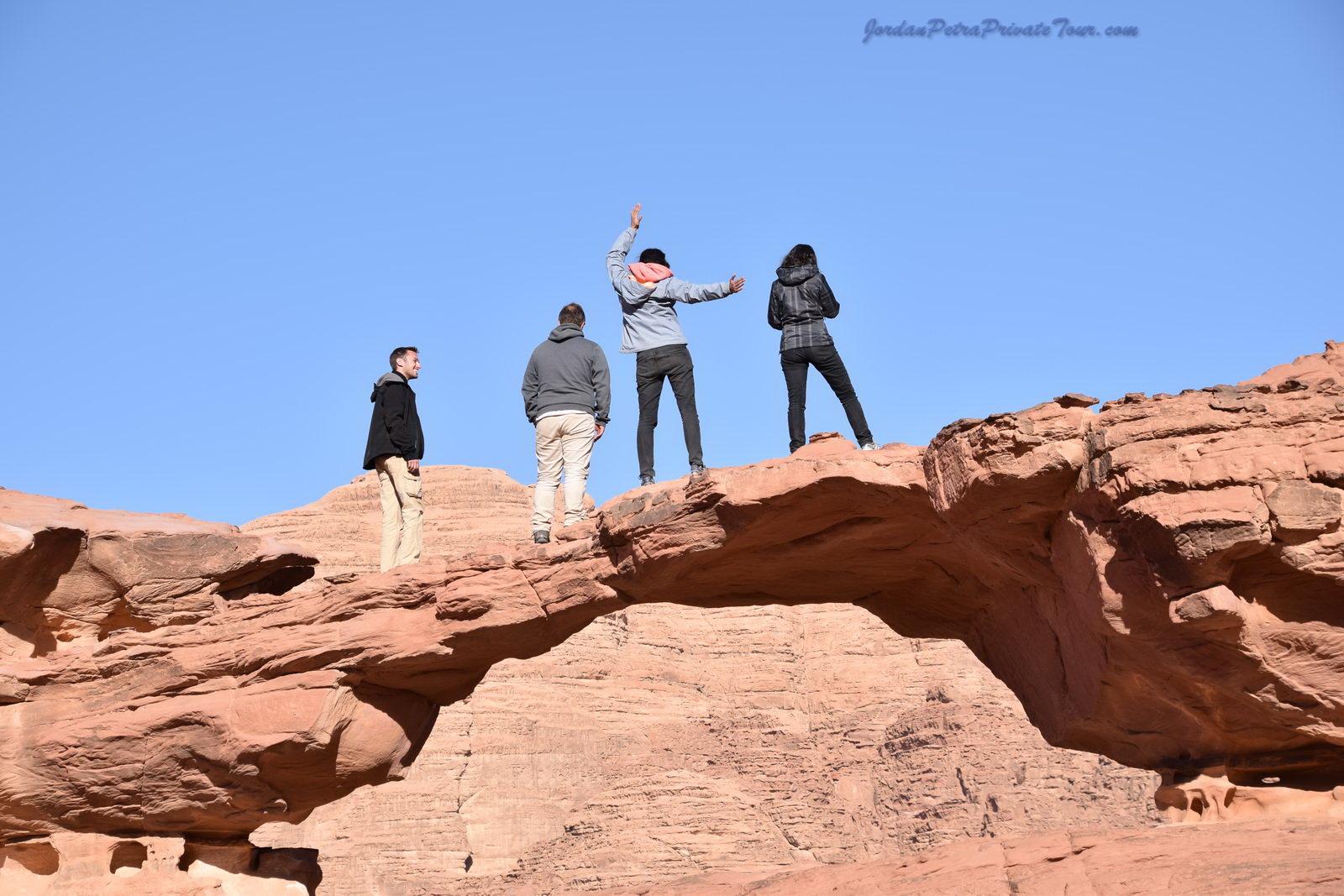Why Wadi Rum is Unique
Wadi Rum, also known as The Valley of the Moon, is a valley cut into the sandstone and granite rock in southern Jordan 60 km (37 mi) to the east of Aqaba; it is the largest wadi in Jordan. The name Rum most likely comes from an Aramaic root meaning high or elevated . Wadi Rum has been inhabited by many human cultures since prehistoric times, with many cultures – including the Nabateans – leaving their mark in the form of rock paintings, graffiti, and temples. Wadi Rum is everything you’d expect of a quintessential desert: it is extreme in summer heat and winter cold; it is violent and moody as the sun slices through chiselled siqs (canyons) at dawn or melts the division between rock and sand at dusk; it is exacting on the Bedouin who live in it and vengeful on those who ignore its dangers. For most visitors, on half- or full-day trips from Aqaba or Petra, Wadi Rum offers one of the easiest and safest glimpses of the desert in the region. For the lucky few who can afford a day or two in their itinerary to sleep over at one of the desert camps, it can be an unforgettable way of stripping the soul back to basics.
Who are the Bedouins
The Bedouins are the local people of Wadi Rum. Most of the locals will be happy to be your guides at Wadi Rum, they will help you and explain everything you want, especially when you ride the Jeep. They belong to seven tribal groups, of which the three largest are the Zalabia tribe who make up the majority of people living in Rum Village (see Rum map); as Rum village is the only village inside the protected area; the Zalabia tribe is largely responsible for tourism services and operate many of the jeep and camel tours. These services are organized through the Rum Tourism Cooperative, a locally run society that shares the tourism business between the villagers.
The other prominent tribal group is the Zweideh tribe, based in the villages of Disi on the northern edge of the protected area. They also run tourism services, including campsites and vehicle tours. Zweideh are not entirely dependent on tourism for their livelihood, having access to a large underground water source that enables them to practice profitable agriculture
Other tribes are Sweilhieen, Omran, Godman and Dbour tribes. They live in different villages depending mainly on livestock raising and partially on tourism.
Even though most local Bedouin have become villagers, they still maintain goat herds for milk, meat and ‘jameed’, a type of yoghurt. For parts of the year, some families or family members return to a wandering existence with their flocks. Few, however, are able to continue a truly nomadic existence today and the traditional Bedouin lifestyle is fast disappearing.
Activities That you can do at Wadi Rum
- - Jeep Tour at Wadi Rum - The minimum recommended time is 2 hours, and it can be for a full two or three days with canyoying .
- - Sunset / Sunrise tours at Wadi Rum will cost 25 JD for the car that can take up to 6 persons (Sometimes of the year this is not necessary and it can be done at the camp itself - but sometimes of the year it becomes far away to observe and it needs transportation
- - Camel ride at Rum - can vary from half an hour to full day tour on the valley (What you would cover in 2 hours Jeep tour will require almost a full day riding camels).
- - AVT: it is available in Bait Ali Eco-lodge and it doesn t need any arrangement , you can pay for it in cash directly in the site (60$/P )/35
- - Hot Air Balloon Activity - Is one time a day starts at 06:00 Am - 6 persons minimum to do it, depending on weather condition-wind speed, - 185$/P -can pay in cash on the same day once confirmed.
What you can see during Jeep Tours
Lawrence’s Spring, Khazali Canyon, sand dunes, Anfishiyeh Inscriptions, Lawrence’s House, the Mushroom Stone, then stop to have a lunch in the middle of the Desert, after that continue the tour to see Burdah Rock Bridge, Umm Fruth Arch, a 40min walk through Abu Khashaba Canyon and an hour walk through the stunning Barra Canyon, one of our absolute favorite spots.
Lawrence Spring: Marked by a water tank near the entrance of Wadi Shallalah, this spring is named for T.E. Lawrence - "Lawrence of Arabia" - who famously made the area his military base and home. The official name of the small spring is Ain Abu Aineh, and the views are spectacular from the top.
Khazali Canyon: A long, narrow canyon known for the impressive number of ancient petroglyphs and inscriptions on the rock walls. The first 100 yards are accessible to all visitors; beyond that point, you ll need rock climbing skills (and gear).
Anfishiyyeh Inscriptions: Located on the side of a mountain, this is an especially impressive collection of Thamudic and Nabataean petroglyphs, complete with ancient drawings of camel caravans.
Barrah Canyon: At five kilometers in length, this expansive canyon is a popular tour stop, perfect for a variety of activities: hiking, rock climbing, and camel tours to name a few.
Burdah Rock Bridge: The tallest natural rock bridge in Wadi Rum, worth the moderately challenging climb to the top for the fantastic views.
Um Fruth Rock Bridge: Another unique arch, and one of the most photographed landmarks in the area, this fifteen-meter high bridge is featured on many guided tours.
Seven Pillars of Wisdom: A rock formation named after the famous book by T.E. Lawrence, accessible by hike or easily visible froe visitor center.
Um Sabatah: An ideal perch for sunset views, this hilltop affords gorgeous vistas of the desert.
Getting There
Whether you have one afternoon or multiple days to spend, Wadi Rum is a convenient stop on your travels through Jordan. You ll probably fly into Amman, making it a great place to start—use these tips to make the most of your time.
If you have limited time and want to prioritize Wadi Rum, you can travel there directly via pre-arranged private transport, taxi or public bus from the nearby tourist hubs in Jordan. From Aqaba you can expect to pay anywhere from $28-36 USD for a private taxi, a one hour ride door-to-door. If you re interested in a same-day round trip arrangement, plan to spend around $60. If you prefer to travel by bus, you can depart from the main station in Aqaba. There is one bus per day that leaves for Wadi Rum between 1:00 and 3:00 PM.
Travelers coming from Wadi Musa, the village just outside of Petra, can catch a daily bus for $10 USD one way. Book your trip through a hotel concierge - the bus makes its rounds each morning at 6:00 AM, picking up travelers at all the local lodges before heading straight to Wadi Rum. Alternatively, a two-hour taxi ride from Petra to the major entry points of Wadi Rum will set you back $50.
You ll be dropped off in Rum Village or at Wadi Rum s beautiful visitor center: the central hub for tourist activity, located about 25 kilometers after the clearly marked highway turns off to the protected area. In addition to the visitor information desk, you ll find a few souvenir shops. Most importantly, this is a main meeting spot for a la carte day tours and where you ll pay the $7 USD park entry fee for international guests (consider purchasing the Jordan Pass if you plan to visit multiple sights in Jordan, more info can be found on the official site).

Best time of the Year to Visit Wadi Rum
It will be better for you to avoid visiting Rum on summer days because the temperature is so high in the desert. In summer daytime temperature in Wadi Rum is 30 degrees Celsius on average. With peak temperatures that can rise to well over 40 degrees Celsius. The average night temperature is around 10 degrees less than the daytime temperature. And winters are much colder. The average daytime temperature is between 10 and 15 degrees Celsius. During the coldest nights of the year, the temperature can drop below zero. Otherwise, the temperature is just above zero. So the best time to visit is from March to May and September to November. March, April, September, and October are the most popular and busy months.
Famous Movies were filmed in Wadi Rum
Since Wadi Rum is a fascinating site, many directors see that Wadi Rum can be an amazing location to film a lot of Action, Romance, imagination and science movies. These are the most famous movies that were filmed in Wadi Rum;
1. Aladdin
2. Rogue One
3. Dune
4. The Martian
5. Prometheus
6. Transformers: Revenge of the Fallen
7. Mission to Mars
8. Red Planet
9. Theeb ….. And many movies were filmed in Wadi Rum



